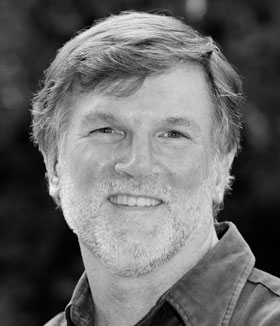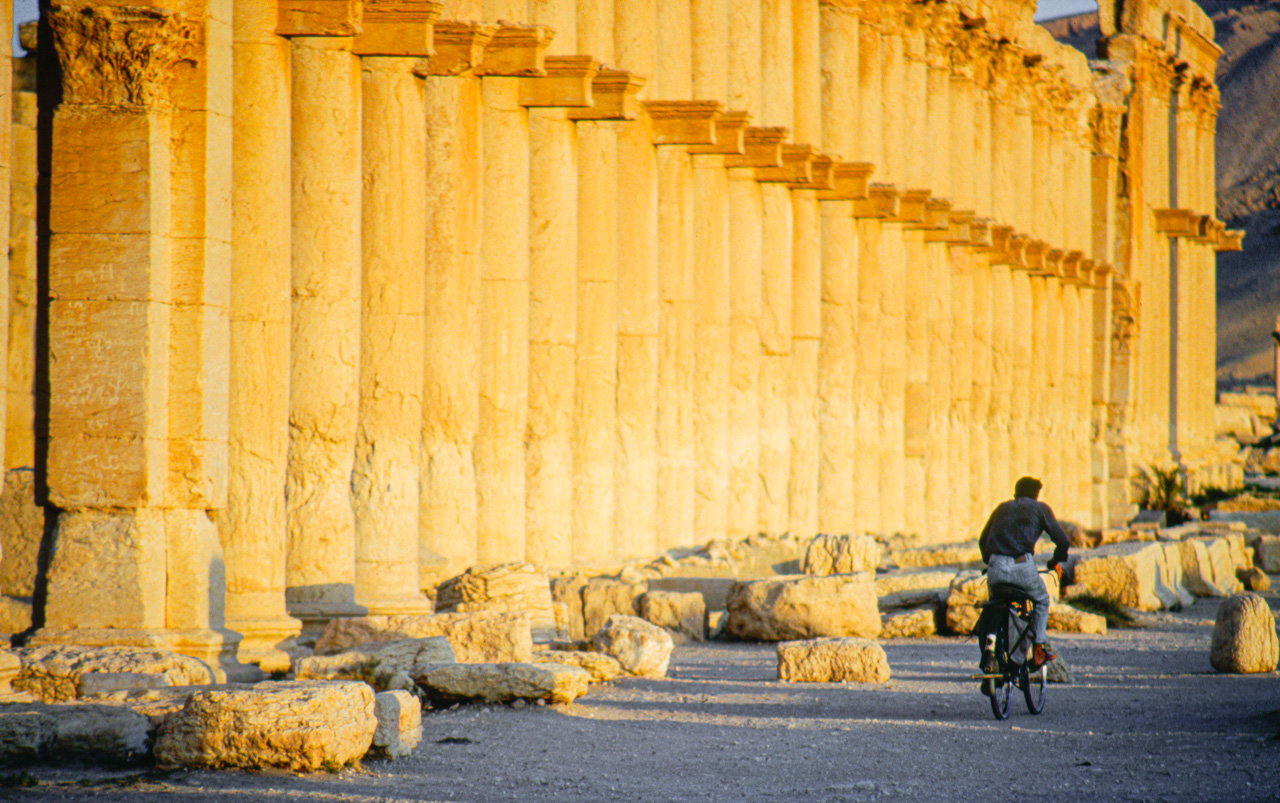Every schoolchild has heard of the Sphinx, the Parthenon and the Coliseum but who has heard of Palmyra, Ebla, Ain Dara or even Crak de Chevalier? Syria has never gained the international recognition it deserves for its archaeological wonders and as a result has never benefited from the mighty tourist dollar which has allowed Egypt, Greece and Italy to restore their ancient cities and bring in even more tourists and recognition. Unfortunately Syria has limited funds to restore some of the world’s greatest archaeological sites and when they have attempted restoration the work has been shabby at best. Furthermore Syria was blacklisted as a terrorist state for so many years. It’s no wonder Syria never made the A list of tourist destinations.
I really had no interest in ancient history nor archaeology when I arrived to Syria. Ruins were simply rocks to me and had no meaning. But somehow all of those fallen arches, broken down colonnades, long abandoned Roman roads started to come to life for me. I became fascinated in the history of the country I lived in and buried my nose in books about Mesopotamia, Alexander the Great, the Roman Empire and the Byzantines. Best yet, I only had to drive a short distance to visit the sites mentioned.
Krak de Chevaliers

One of my favourite trips was out to Krak des Chevaliers, near the Lebanese border. This Crusader castle, built strong and proud in the 12th century, looked like it had been lifted straight from a medieval painting. I spent hours roaming its thick walls and secret staircases, imagining knights preparing for siege or monks scribbling in dark corners. Even after centuries of storms and battles, the Krak still stood defiant against the skyline, a monument to an age when stone and faith built empires.
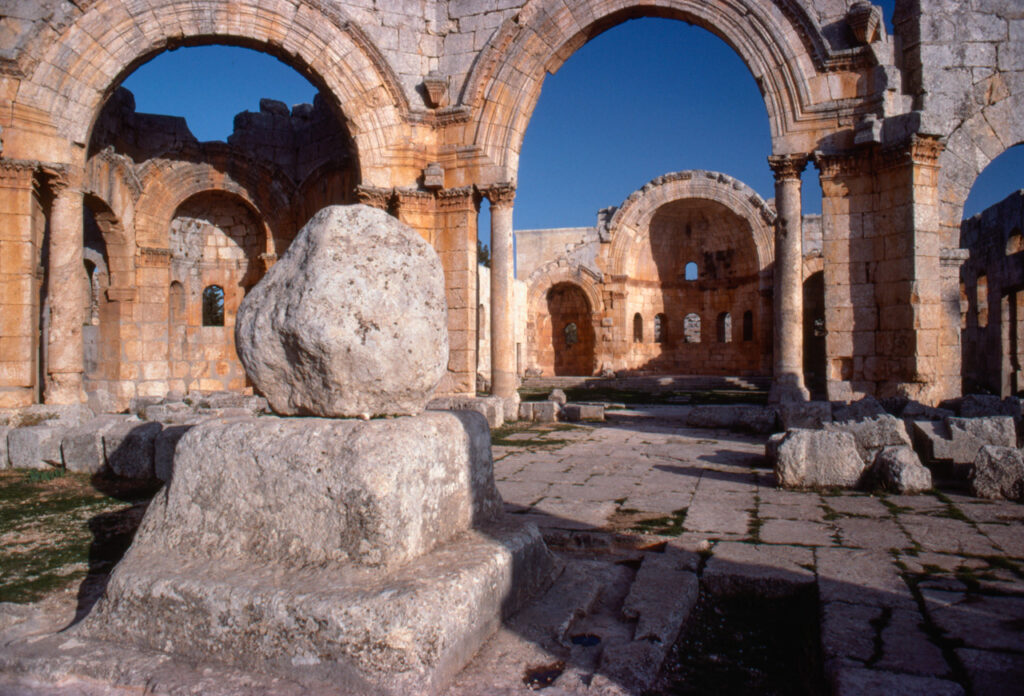
St Simeon
In the early fifth century, a Syrian monk named Simeon wandered out into the desert, where he found, near modern-day Aleppo, an abandoned column rising out of the desert. Simeon climbed the pillar and would remain on the column for the next 37 years. From the pillar, he preached sermons to those who sought out his wisdom and his example, though history has not treated his vocation well.
He was not the only pole sitter (known as ‘stylites’) but he was the first and the most famous, and after his death this church was built on the site of his pillar to honour his ascetic devotion. The church was huge, over 5,000 square meters, rivalling Istanbul’s Hagia Sofia in size, though it has long since fallen into ruin, and now composes only part of the large complex of ruins known as the Dead Cities of Syria. Saint Simeon’s pillar, surprisingly, still stands, though it’s been whittled down to just a few meters from centuries of relic seekers who’ve carved off small shards for themselves.
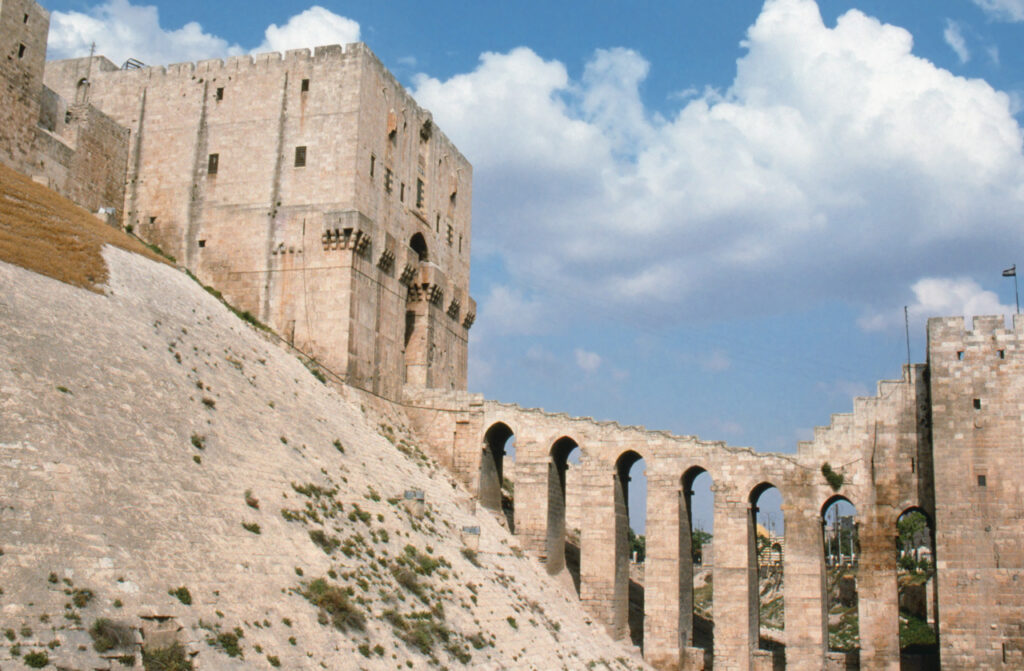
Aleppo Citadel
In the centre of Aleppo looms the great citadel, one of the oldest and largest castles in the world. The hill where the citadel sits has been used since the middle of the third millennium BC.
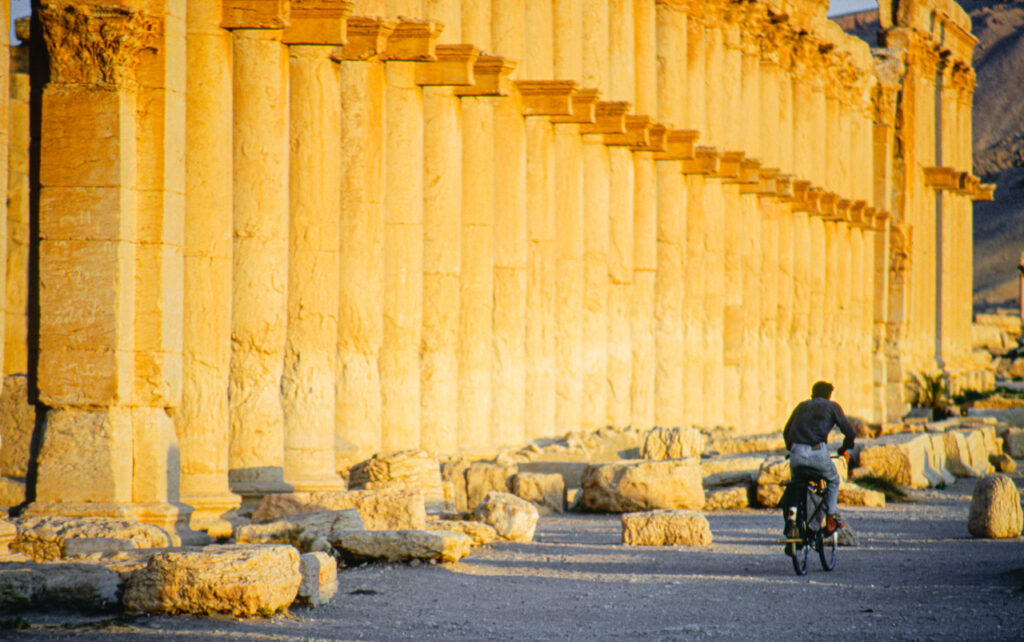
Palmyra
Palmyra is one of the world’s greatest archaeological sites yet little known to anyone other than historians or adventure travellers. It is an oasis settlement lying almost in the geographical centre of Syria and well placed on the caravan routes between Persia and the Mediterranean. The settlement probably reached its peak while it formed part of the Roman Empire in the first and second century AD.
It takes a lot of imagination for the present-day visitor to get a feel for the grandeur that the city once experience. The only traffic I saw leading into the city along the Grand Colonnade was a sole man on his bicycle.
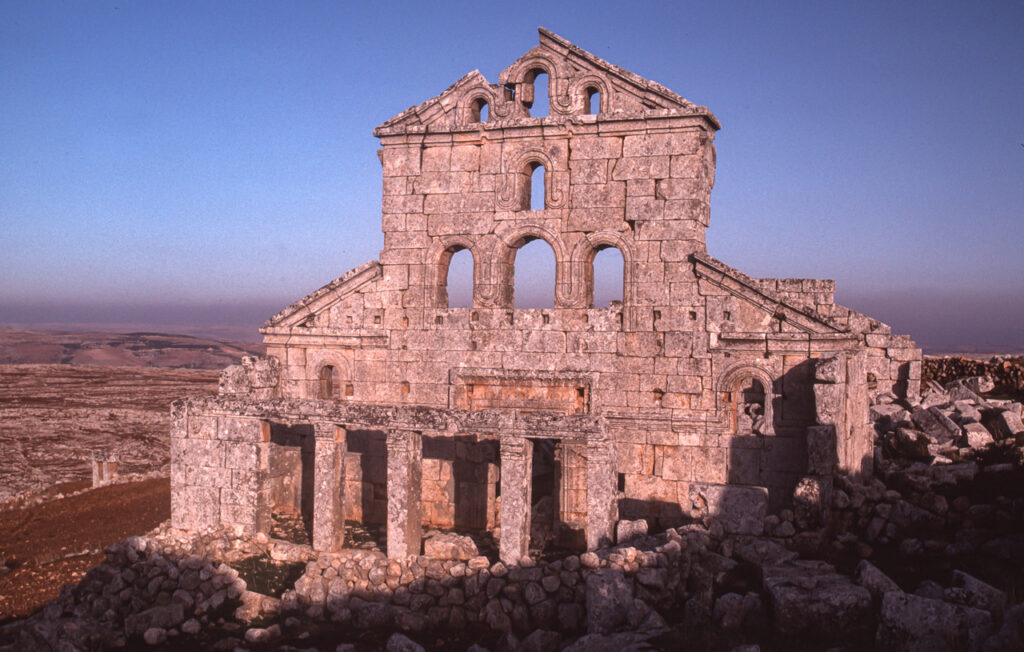
Byzantine Dead Cities
My favourite weekend outing was a drive through the dead cities just an hour west of Aleppo.
During the Byzantine era about 40 villages prospered in these hills largely due to the success of international trade of olive oil. Then for some reason the villages were abandoned between the 8th and 10th century.
History and archaeologists seemed to have forgotten these dead cities, and they appeared to lie in ruin untouched for 10 centuries. I would love to explore these ruins. At times I’d kick the dirt and see mosaic tiles under my feet. There was always something to discover in these ruins.
Today, 20 years later after I visited, the ruins have been discovered and in 2011 the dead cities were inscribed as a UNESCO World Heritage Site under the name of ‘Ancient Villages of Northern Syria’.

Al Bara
I stumbled across Al Bara on one of my weekend drives through Syria’s rocky hills. At first glance, it looked like a stone graveyard — crumbling churches, villas, and ancient tombs scattered under the hot sun. But as I wandered through the ruins, I could almost hear the buzz of life from the 4th century, when this place thrived on olive oil trade. Built from soft limestone, Al Bara’s skeleton still holds a quiet dignity, whispering stories from the Byzantine world that time almost forgot.
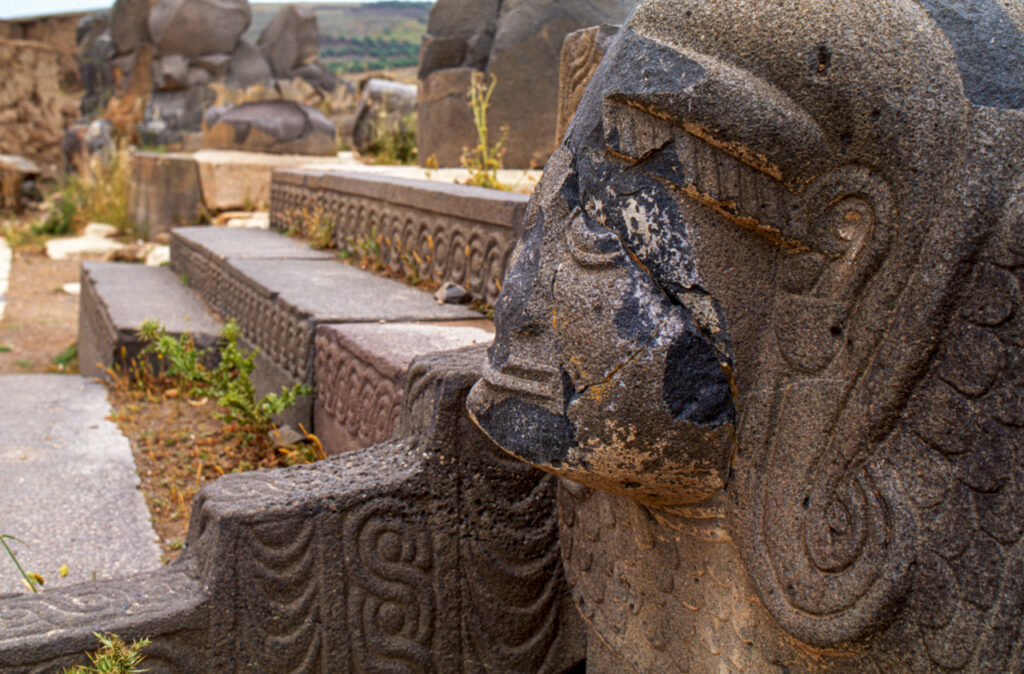
Ain Dara
Visiting Ain Dara in the early 1990s felt like stepping into a forgotten myth. Set near Afrin, the temple’s huge stone lions and sphinxes loomed like silent guardians. What struck me most were the giant carved footprints leading into the sanctuary — as if a god had once walked here. The temple, dating back to the Iron Age, shares eerie similarities with descriptions of Solomon’s Temple. I wandered its weathered stones in awe, feeling tiny beneath the weight of ancient hands that had carved such a masterpiece.
